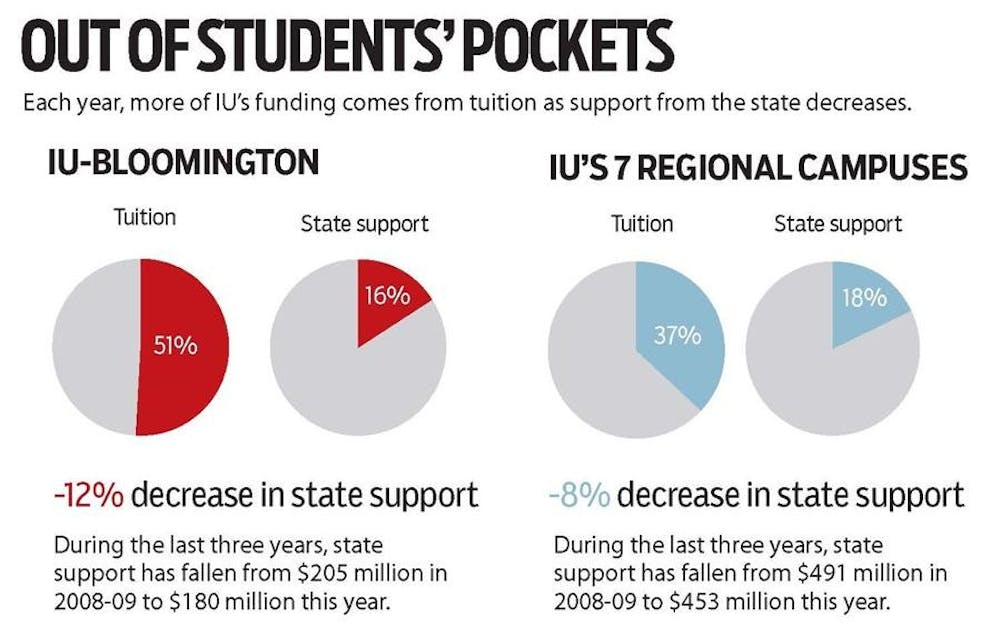The state’s $28 billion budget, introduced in April of this year, left the IU system with considerably less support and created concerns about the performance-based criteria system.
“I am very disappointed that our efforts to improve the performance funding plan for higher education were unsuccessful,” IU President Michael McRobbie told Inside Indiana Business. “The plan proposed by the Commission for Higher Education and approved by the General Assembly has serious flaws.”
McRobbie said he understands the state budget is a work in progress, but the new budget has cut funding to two of Indiana’s “highest achieving” and “best-performing” institutions, including the IU School of Medicine.
The factors that determine how much state funding the University receives is performance-based. Therefore, that number can fluctuate from year to year.
McRobbie said the system is flawed because “levels of excellence” along with research endeavors of IU-Bloomington and the health sciences schools located in Indianapolis went unaccounted for.
Support from the state has fallen 8 percent across the IU system in the last three years. State support accounts for 16 percent of total funding on the Bloomington campus alone.
“Over the last three years, due to rapid increases in resident enrollment in Bloomington, state support per in-state student has fallen by 17 percent, from $9,700 per student in 2008-09 to $8,100 per student this year,” said Ryan Piurek, director of University communications.
Piurek said the other seven IU campuses receive state support for only 18 percent of total funding.
State Rep. Peggy Welch, D-Bloomington, spoke of the factors taken into consideration when allocating state funding for a public university.
“There’s concerns from most of our state-funded universities about the performance-based funding,” Welch said.
Indiana universities come together to present their needs and proposed budgets, Welch said.
Welch is a member of the Indiana Ways and Means Committee. The budget committee has hearings a year after every election.
In this particular case, the last meeting was in 2009, Welch said. The meetings continued through January of that year.
“The performance base is a very small part of the funding for a university,” Welch said. “(It) doesn’t mean it won’t grow to a large part at some point.”
Welch said the budget is formulated and passed by the General Assembly and “truly developed” by the legislature.
When the budget is approved by the House, it is reviewed by the Senate. The Senate then crafts a proposal for the governor.
Welch said the proposal goes back to the House after the Senate has reviewed it, and a conference committee is assigned to “iron out the differences.”
It is sent to the governor in its final stages.
Students have posed concerns regarding the cuts and how they could negatively
affect the classroom.
Junior Carrie Roche said with less funding from the state, educators may lose
enthusiasm.
“Teachers wouldn’t be caring as much as they usually do, unless they’re just an extra dedicated (educator),” Roche said.
Decrease in state support leaves IU adapting to losses

Get stories like this in your inbox
Subscribe





